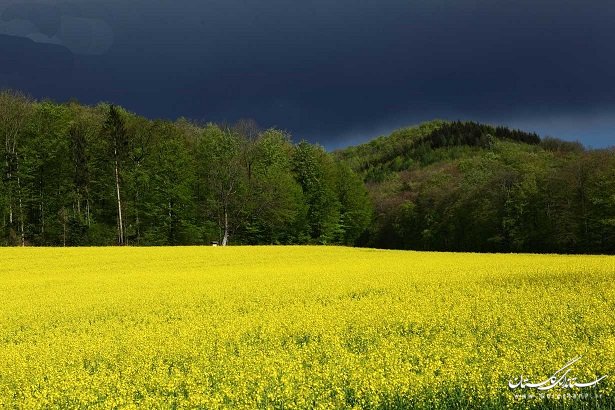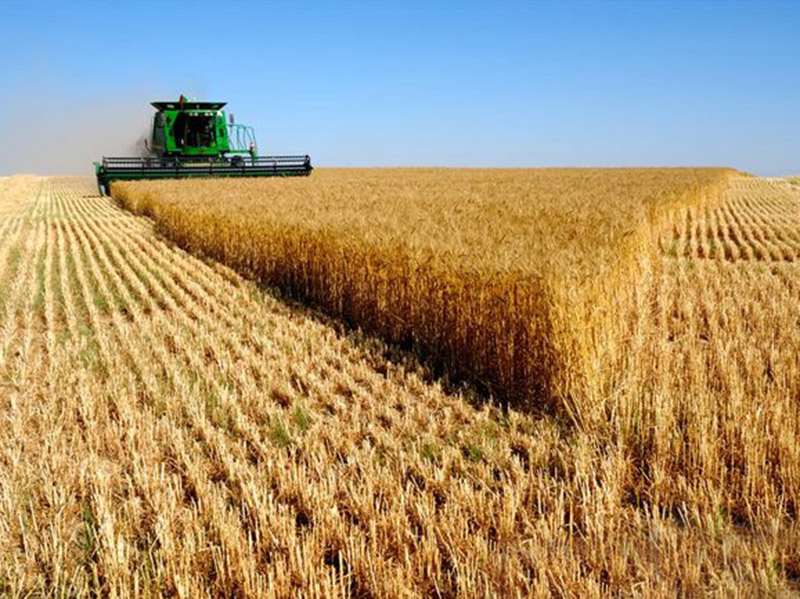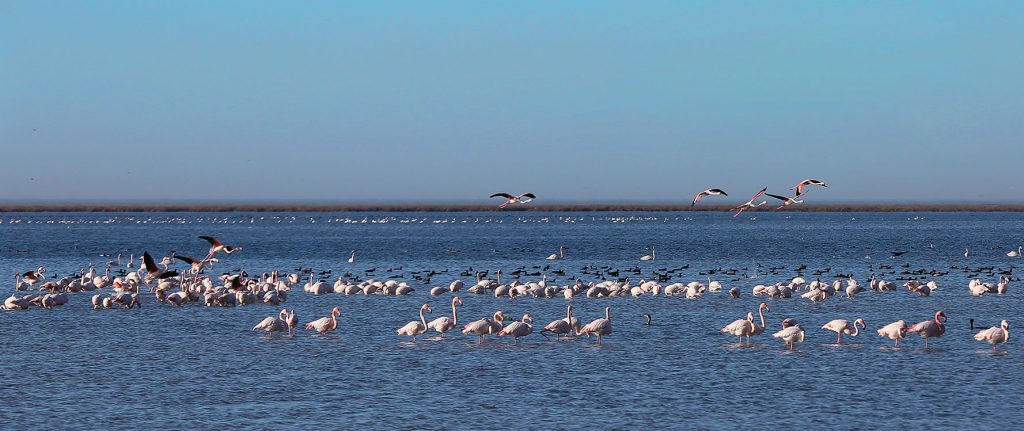Why Golestan

General acquaintance with Golestan province
Golestan province is one of the northern provinces of the country with the center of Gorgan, which has long been a settled community and it dates back to six thousand years ago. Golestan province is situated from 53 degrees and 51 minutes to 56 degrees and 21 minutes and 4 seconds of the east longitude of 36 degrees and 30 minutes and 2 seconds to 38 degrees and 7 minutes and 6 seconds of the north latitude in the northern part of the country. This province was isolated from Mazandaran province in 1997. It is situated from the north with the Republic of Turkmenistan, from the west with Mazandaran province and the Caspian Sea, from the south with the province of Semnan and from the east with the northern Khorasan province. Golestan province with a suitable geographical location in the fields of agriculture, horticulture, livestock, fisheries, agricultural transformation and complementary industries, natural attractions and tourism, oil and gas capacities of the land, foreign trade, land transit (road and railways), air and sea has very high capacities.
Residents of Golestan province are divided into two main groups of “Persians” and “Turkmen” in a general division. The Persians reside in the southern and central parts of the province. The inhabitants of the province mostly speak Gorgani, Katuli and Mazandarani. The Turkmen of the province live in the central and northern parts of the province and speak the Turkmen language.
From a climatic point of view, 7 climates of the world’s 13 known climates (humid temperate, Mediterranean moderate, dry temperate, mountainous moderate, mountainous cold, semi-arid and dry) are in the province.
In terms of topography from -21 to 3945 m (Shahvar peak) with a wide variety of herbs is one of the special characteristics of the province which has mountain, plain, coastal, desert, forest, pastureland views, numerous wetlands and beautiful bogs (Kaboudval, Lovoh, Barankouh, etc.) with extensive naturalistic features.
Golestan province has an area of more than 20,438 square kilometers (1.3% of the country’s total area and 21th ranking among the provinces). The population of Golestan province is 1868819 people in 2016 according to the general census of population and housing.
Neighboring with the Caspian Sea and the possibility of establishing water connections with peripheral countries as well as the Central Asian countries, and ethnic and cultural affiliations with these countries and also being located between the two large centers of population in the east and west of the province as well as the beautiful natural sceneries and the valuable historical and religious works, the north-south corridor, the low-yielding areas in the north of the province, minor mines like mountain clay and iodine, access to appropriate infrastructure are unique advantages that the province can use in the development process. In addition, the numerous economic potentials of the province in the areas of tourism, industry, foreign trade, agriculture and large area of land, oil and gas rich reserves can play a significant role in the economic flourishing of the province, country and region. Regarding the natural features, Golestan province has consisted of three mountainous, sub-montane and flattened parts and due to the presence of forests, mountains, flatlands, plains, grasslands, rivers, seas, lagoons, gulfs, islands, numerous waterfalls and low-yielding lands, Golestan province is considered one of the most beautiful and unique provinces in Iran.
Having high political and police security, having a suitable climate for attracting and retaining agricultural, tourism, industry and business professionals have created numerous investment capabilities in different parts of the province.
Agriculture



In the agriculture sector and conversion industries, due to the variety of agricultural products with a cultivated area of 646.5 thousand hectares and an annual production of 1.3 million tons of agricultural and livestock products that however, due to the capabilities available, this figure can be upgraded, Golestan has become one of the major centers for providing food supplies to the country and this section provides a forum for the presence of investors in areas such as forestry development in the southern lands, the implementation of land use change plans for low productivity in productive gardens, the increase of the processing of agricultural products with the capacities and investment advantages of conversion and complementary industries, the construction of organic and biological fertilizer plants, the creation of modern packaging industries for crops and horticulture, greenhouse production and dense cultivation, shrimp breeding, sturgeon farming, large-scale livestock breeding, the creation of chains and cycling of agricultural, garden – livestock and poultry and aquatic animals productions, the construction of industrial dairies, extensions of raw food and animal feeds, aquatic products, pharmaceutical and food supplements, beekeeping, industrial sheep, ornamental plants, the cultivation of medicinal plants and the development of organic products.
At the same time, given the existence of the Caspian Sea, the province’s investment potential in the fisheries and aquaculture sector is significant. The capacity for constructing infrastructure and shrimp farms, sturgeon, salmon and bony fish and cold water and hot water fish in the sea area of Golestan is remarkable that among them is the current site of Gomishan shrimp which is the only small part of the investment and Golestan could be turned into the hub of Middle East herds with the presence of investors. In addition, in order to exploit unconventional waters of the sea, landslides and low yields of the Caspian Sea and the development of non-oil exports of sturgeon, the position of the Caspian Sea caviar is more and more established in international societies and its profitability will be shown.
Commerce
In the sector of commerce and services, due to the extensive and safe borders of the province in the field of sea and land, the existence of the border customs of Incheh Boroun and the opening of the north-south rail corridor in the east of the Caspian Sea, which has turned Golestan into a gateway to the Central Asia can be a great help for the import of mineral raw materials to the province for processing and also a suitable substrate for exporting manufactured goods of the province.
The Iranian-Turkmenistan-Kazakhstan International Corridor opened with the presence of three presidents at the border between Iran and Turkmenistan is one of the best, shortest and most economical routes for connecting the north to the south. This railroad connects CIS countries through Iran to the Persian Gulf and world markets which account for roughly 5 percent of the world’s population.
This rail route is about 910 kilometers long from which is referred to as the “north-south” railroad pass and reduces more than 600 km of international CIS transit route to the Persian Gulf and Europe and in phase I, the capacity of the annual displacement of 10 to 12 million tons of goods and the development plan is targeted at more than 25 million tons.
Considering that CIS countries with huge resources in energy, oil, gas, grain, etc., in increasing the transit of goods, the expansion of terminals, the establishment of large metallurgy industries, petroleum refining and cereals, employment capacity and, ultimately, the economization of the region and serious transformation of the transportation industry in the province are important and also considering the decisions taken to establish a free trade, industrial and mining zone of Incheh Boroun in the north of the province and Atrak Economic Special Zone, a giant leap in terms of trade and investment will take place in Golestan.
The capacity of countries such as Kazakhstan, due to the presence of rich mines of aluminum, steel, zinc, lead and Ferro-manganese and the agricultural conditions of the north of the province, has attracted the attention of many investors towards Golestan.
In addition to the above items, one of the characteristics of this province is the vast expanse of low-yielding land and dandelion, which is less visible in other northern provinces of the country. This prominent feature allows the possibility of the establishment of large industries, including metallurgy and petro plating in the province of Golestan, which is virtually impossible to establish in other parts of the country. This feature, along with the oil and gas reserves in the region, which has also begun excavation and exploration, can turn Golestan province into the base and hub of oil, gas and petrochemical industries in the north.
Due to the unique access conditions of the province’s communications network, including land, sea, air and rail, these investment capacities somehow indicate the high security of the return on investment in Golestan, the province where the international airport of Gorgan known for flights to Tehran, Mashhad and Zahedan vice versa and expandable, and the annual displacement of nearly 200,000 people is one of the country’s best-known airports and also the three capacities of the unique ports, such as Khajeh Nafas, Turkman and Gaz, will not only clarify the future of investment but also provide the opportunity to enter the private sector for investment.
Considering that the north-eastern corridor in the east of the Caspian Sea will be a capacity to transport cargo and passengers between Iran and the Central Asian countries and it is also important to invest in Gorgan railroads to the holy city of Mashhad and promise a good future for the development of the province.
There are more than 5,000 km of the main, suburban and rural roads in the province and the possibility of investing in the construction of projects such as Freeway of Nokandeh to Ashkhaneh, Gorgan highway to Incheh Boroun, Behshahr highway to Bojnord.
Industry and Mining



In the industrial and mining sector, the existence of 13 industrial towns and 10 industrial districts with all the basic infrastructure such as water, electricity, gas and land, the existence of the vast area of Atrak in the north of the province and authorized for the establishment of all chemical and non-chemical industries, according to the decision of the Board Honorable Ministers and special privileges for undeveloped areas, including a 10-year tax exemption for the existence of a 1000 MW power plant and the possibility of establishing a variety of oilfields industries and swaps, given the rich resources of the oil and gas in the province and the availability of easy access to the resources and mineral resources of Kazakhstan and Turkmenistan, the transit of the Sarakhs-Neka gas pipeline and Turkmen gas pipeline to Iran and the possibility to supply gas to the industries as fuel and raw materials, the possibility of establishing large industries with regard to the provision of necessary infrastructure facilities, including large industrial town of 1000 Hectares of Atrak and connecting to the north-south corridor and coastlines of Khajeh Nafs and Gomishan ports through the Caspian Sea are among the issues which the investment in this sector will be more confident, as the construction of a multipurpose harbor port and connecting it to the national railway will have a significant impact on increasing the efficiency and economic performance of this commercial and economic port in the future and also due to the short distance between Khajeh Nafas to Bandar Turkman, through construction of 8.5 km long railway, the connection of Khajeh Nafas port to the national and international railways is established.
The establishment of Free Trade and Industrial Zone of Inche Boroun in the north of the province and the special economic zone of Atrak, the possibility of using foreign exchange facilities and domestic and foreign financial officers and the above-mentioned capabilities and also the mere existence of the country’s mines as a capacity to meet the Middle East’s need for this mineral are all part of the capabilities and investment opportunities. Also, among other industrial opportunities of the province, considering the capacity of the Central Asian countries, one can consider the feasibility of establishing oil and gas and petrochemical industries in Atrak basin with regard to oil and gas resources in Golestan in the form of metallurgical and petro plating city (the Caspian Sea and neighboring territories) and existing and future infrastructure (especially gas pipelines) and completing the production chain and strengthening industrial clusters for the existing industries.
Also, an international exhibition with the latest technology of the exhibition industry day could provide a great opportunity for businessmen and merchants to marketing the products.
At the same time, the establishment of the Foreign Office in Gorgan and the facilitation of passports and visas and the possibility of conducting many international relations through it is another step towards facilitating the business of tourists and businessmen.
Tourism
In the tourism sector, considering the natural attractions of Golestan province, including forest parks, natural waterfalls, international wetlands of the Coasts of the Caspian Sea and the Gulf of Gorgan, coastal villages, as well as historical and ancient sites such as the Tower of Qaboos, Radkan Rod, Historical Minaret of Gorgan Mosque, Gorgan Defensive Wall as the third longest defensive wall of the world after the wall of China, the historic city of Jorjan, Turangtappeh, the historic city of Tamisha and dozens of other ancient works will provide unique investment opportunities in the construction of 4 and 5 star hotels.
The implementation of Ashouradeh island tourism projects as the only island of Caspian Sea, park and telecabin of Naharkhoran in Gorgan and tourist accommodations, Bandar Gaz, BandarTurkman, Kabudval, recreational complexes, special water-coastal facilities, telecabin and villages of tourists can turn Golestan into an example of the tourism economy in the country.
Also, due to different ethnicities and different traditions for various types of handicrafts such as needlework and Turkman ornaments, silk weaving, weaving naked tattoos, felting, Katoul knitted fabrics, traditional fabrication, Cossack sewing, Alachik , plus weaving, Jajim weaving, Shakouh needlework, carpet weaving, Gabbe, rug, carpet, local cloth and dozens of other items, Golestan can create small and large manufacturing workshops at the provincial and regional levels and they can also be sent to target markets in Asian and European countries.





